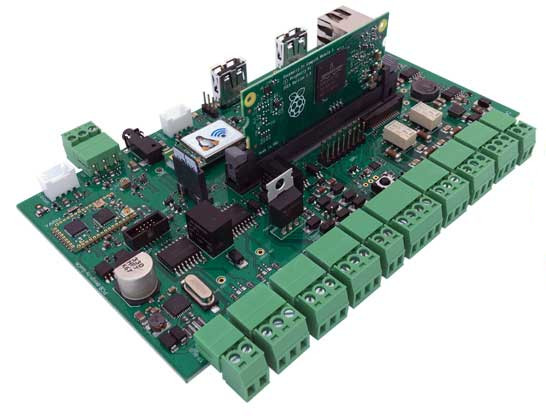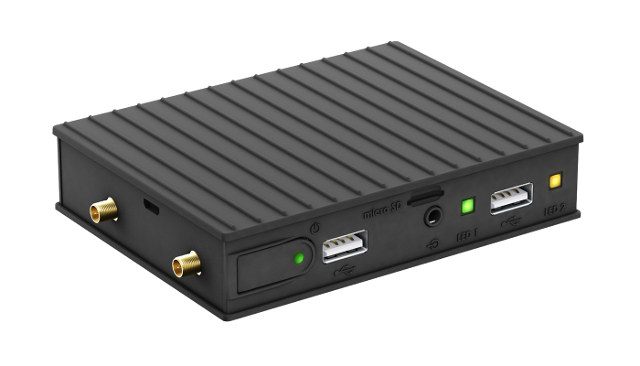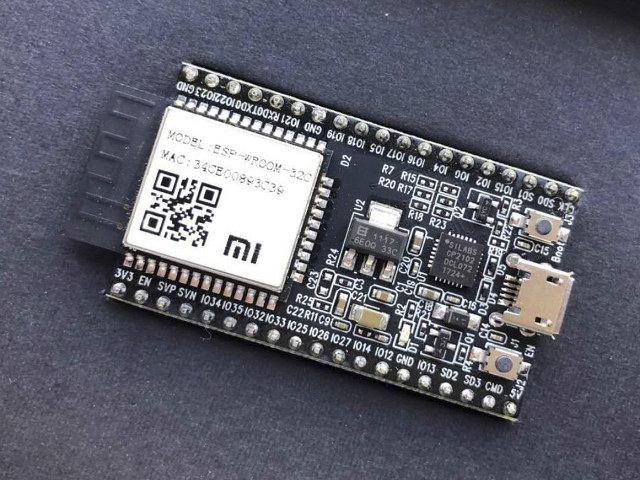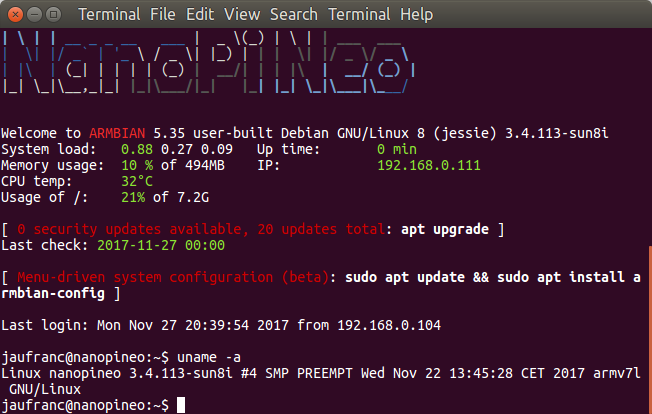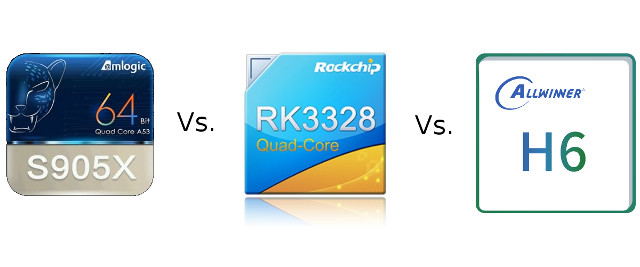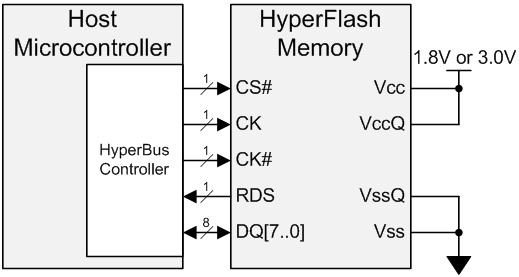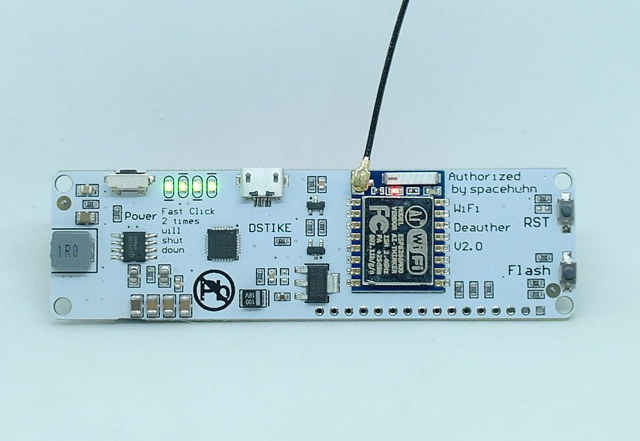Raspberry Pi CM3 & CM3L modules are used in so many devices it’s hard to keep up. From NEC digital signage displays, to industrial touch panels, and IoT gateways, the Broadcom BCM2837 based system-on-module are found in more and more products and solutions, and number of announcements seems to have increased over the last few months. The latest product to leverage Raspberry Pi CM3L SoM is made by Italy based Acme Systems, and designed for home automation. CM3-HOME comes with opt0-isolated inputs compatible with KNX and DALI buses, various connectivity options (Ethernet, WiFi, Bluetooth, 868MHz ISM radio…), and other expansion port. Two edition of the boards are available: LITE and FULL, with the former suitable for most home automation project, and the latter adding support for some commercial lighting systems and energy harvesting Radio ISM nodes. Acme CM3-Home specifications: 200-pin SODIMM Module Slot compatible with Raspberry Pi CM3 / CM3L […]
Compulab IOT-GATE-RPi Industrial IoT Computer is Powered by Raspberry Pi CM3 Module
We’ve seen several industrial products powered by Raspberry Pi 3 board or CM3 module recently, with the likes of Industrial Shields Panel PC, TECHBASE ModBerry, or Pi/104 PC/104 compliant carrier board among others. We can now add another industrial computer based on Raspberry Pi CM3 module with Compulab IOT-GATE-RPi IoT gateway, with dual Ethernet port, support for 3G/LTE modems, a rugged case, and working in a wide temperature range of -40°C to 80°C. Compulab IOT-GATE-RPi specifications: SoC – Broadcom BCM2837 quad-core Cortex-A53 @ 1.2GHz with VideoCore IV GPU System Memory – 1GB LPDDR2 Storage – 4 to 64GB of soldered eMMC flash, micro SD socket Connectivity 2x 100Mbps Ethernet WiFi 802.11b/g/n, Bluetooth 4.1 BLE 3G / LTE cellular modem via mini-PCie module) Video Output – HDMI 1.3, up to 1920×1080 Audio – 3.5mm stereo line out jack, HDMI audio USB – 4x USB2.0 host port Serial 1x RS232 port, ultra-mini […]
Xiaomi Unveils Their Very Own ESP32 Development Board, Module & SDK
We now have plenty of modules and board based on Espressif System ESP32 dual core wireless SoC, and a fairly good software support with ESP IDF SDK, Arduino Core, MicroPython, Espruino and other solutions. So I was surprised when I saw Teo Swee Ann, Espressif CEO, posted photos about an event – Xiaomi IoT Developer Conference – where Xiaomi apparently introduced their own ESP32 development board, together their own SDK (still empty right now) compatible with the company’s Mijia ecosystem, as part of their “Open IoT platform” The slide below translates as “WIFI module – Automated manufacturing / 4-fold foolproof mechanism / whole process tracing / cost price (about 15 RMB)” and “Open source SDK”, with the price likely the price of Xiaomi ESP32 module (ESP-WROOM-32C) shown on board above (Thank to hm for translation). I could not find much information at this early stage, except new partnership between Baidu […]
NXP Announces OpenIL Industrial Real-Time Linux Distribution for Industry 4.0
NXP has announced the release of OpenIL industrial Linux distribution with real-time OS extensions and Time-Sensitive Networking (TSN) support for factory-automation for the Industry 4.0 era. The OpenIL distribution includes support for per-stream policing, time-aware shaping of network traffic, and 801.1AS time synchronization, and supports NXP Layerscape SoCs and boards such as LS1028A dual ARMv8 processor, or LS1021A-IOT IoT gateway. Some notable OpenIL features include: Xenomai real-time extensions to Unix, making porting relatively easy from an RTOS like VxWorks or pSOS Extensible Markup Language (XML) and NETCONF-based network configuration utilities for TSN Generalized precision time protocol (gPTP) with the linuxptp daemon Drivers for the Ethernet Interfaces and the NXP SJA1105T TSN switch Support for edge computing services Optional instantiation of the Ubuntu user-space filesystem layout You’ll find the source code on Gihub, and some more information on OpenIL.org website. NXP appears to be the only company involved in the project, […]
Armbian v5.35 Released with Linux 4.13, U-boot v2017.09, New Boards Support
Armbian v5.35 has been released last Friday as a major update that brings Linux mainline kernel to version 4.13, U-Boot mainline to version v2017.09, adds support for 7″ Raspberry Pi display, Realtek WiFi drivers (mainline), and new stable hardware support for NanoPi Duo, Pinebook, and Orange Pi R1. Some other boards got experimental support, including Le Potato, NanoPi NEO 2, Orange Pi Zero Plus, Orange Pi Zero Plus 2 (H5). The desktop version of the images gets a full featured XFCE terminal, OpenVPN connector, a new wallpaper, and various other changes and fixes. armbian-config is normally used to configure the board for example networking configuration, but the utility has become even more useful with support for Hotspot, Bluetooth, SSH server configuration, swtich between stable & beta builds and between kernel applications, adds the ability to start an RDP server, and install third party software such as SAMBA, OpenMediaVault, PiHole, Transmission […]
Amlogic S905X vs Rockchip RK3328 vs Allwinner H6 Processors – Benchmarks & Features Comparison
Rockchip, Amlogic, and Allwinner are all battling for the lower and mid-range segments of the TV box market, so it may be interesting to compare their solutions. We won’t look into the ultra low-end market with 32-bit ARM Cortex A7 processor, but instead compare some of the recent quad-core 64-bit ARM Cortex A53 processor for 4K HDR TV box from the company with respectively Amlogic S905X, Rockchip RK3328, and Allwinner H6 SoCs. We’ll compare some of the benchmarks obtained with Android TV boxes, as well as other features like video support, USB, and Ethernet interfaces. S905X vs RK3328 vs H6 Benchmarks Let’s start with results for popular Android benchmarks: Antutu 6.x, Vellamo 3.x, and 3DMark Ice Storm Extreme v1.2 with results obtained from 3 TV boxes: Mini M8S II (Amlogic S905X), A95X R2 (Rockchip RK3328), and Zidoo H6 Pro (Allwinner H6). A score is highlighted in green is there’s a […]
Octo SPI / HyperBus Interface is Designed for High Speed Serial Flash, RAM, and MCP
So far, if you needed high speed storage with low pin count in your MCU based board, you could use QSPI (Quad SPI) NOR flash, but earlier this month I wrote about STM32L4+ MCU family, which added two Octo SPI interfaces. I had never heard about Octo SPI previously. Those two interfaces can be used with single, dual, quad, or octal SPI compatible serial flash or RAM, and support a frequency of up to 86 MHz for Octal SPI memories in STM32L4+ MCU. STMicro OctoSPI interface also supports Cypress/Spansion Hyperbus mode to connect to HyperFlash or HyperRAM chip, or even HyperFlash + HyperRAM Multi-Chip packages (MCP), and variable or fixed external memory latency as defined by the Hyperbus protocol specification. The latter reveals Hyperbus supports performance up to 400 MB/s (provided the controller support 200 MHz), and relies on either 11 bus signals using 3.0V I/O (Single-ended clock CK), or […]
Cheap Evil Tech – WiFi Deauther V2.0 Board and Autonomous Mini Killer Drones
Most technological advances usually improve life of people, and with the costs coming down dramatically over the years, available to more people. But technology can be used for bad, for example by governments and some hackers. Today, I’ve come across two cheap hardware devices that could be considered evil. The first one is actually pretty harmless and can be use for education, but disconnects you from your WiFi, which may bring severe physiological trauma to some people, but should not be life threatening, while the other is downright scary with cheap targeted killing machines. WiFi Deauther V2.0 board Specifications for this naughty little board: Wireless Module based on ESP8266 WiSoC USB – 1x Micro USB type changed, more stable. Expansion – 17-pin header with 1x ADC, 10x GPIOs, power pins Misc – 1x power switch, battery status LEDs Power Supply 5 to 12V via micro USB port Support for 18650 […]

